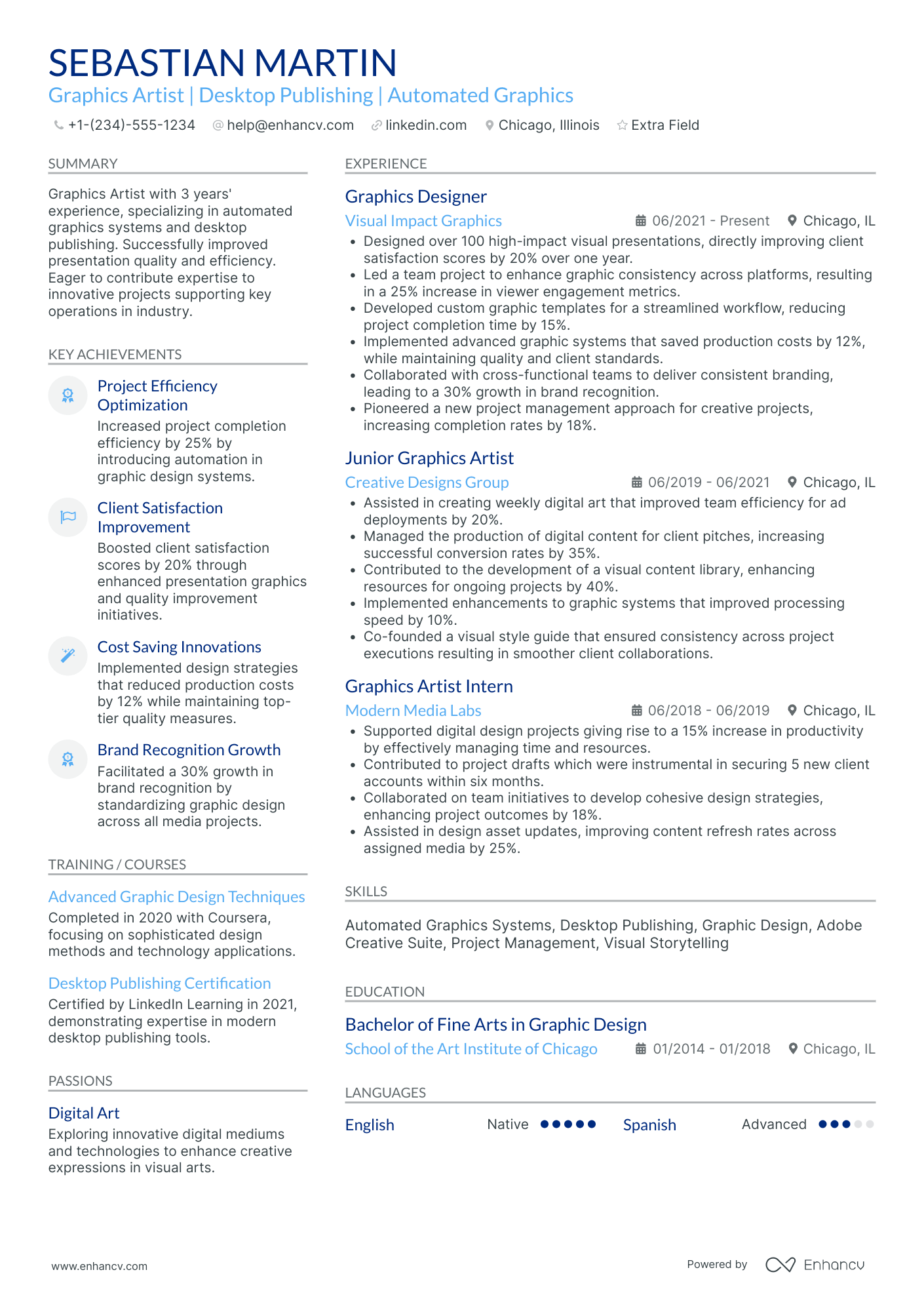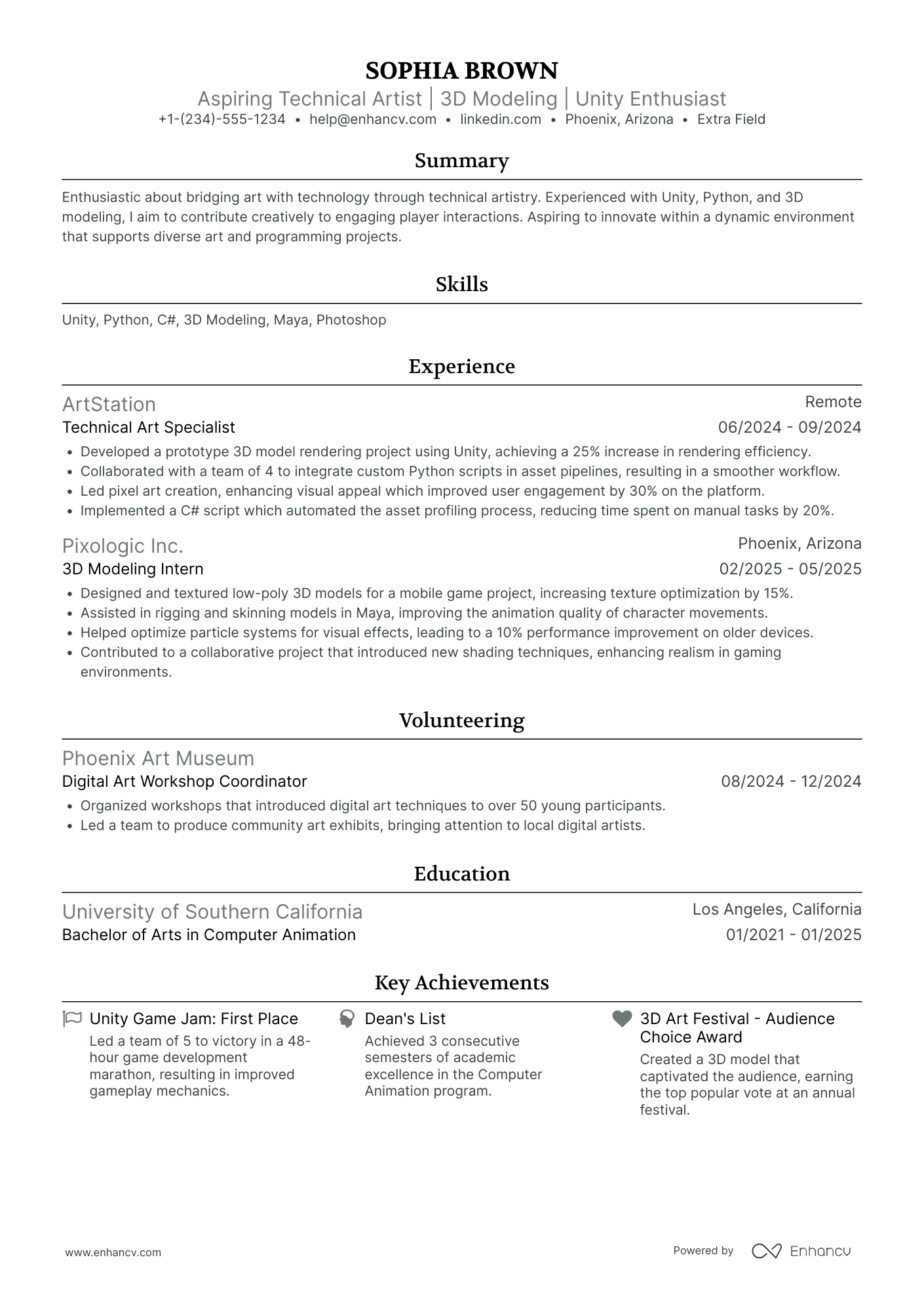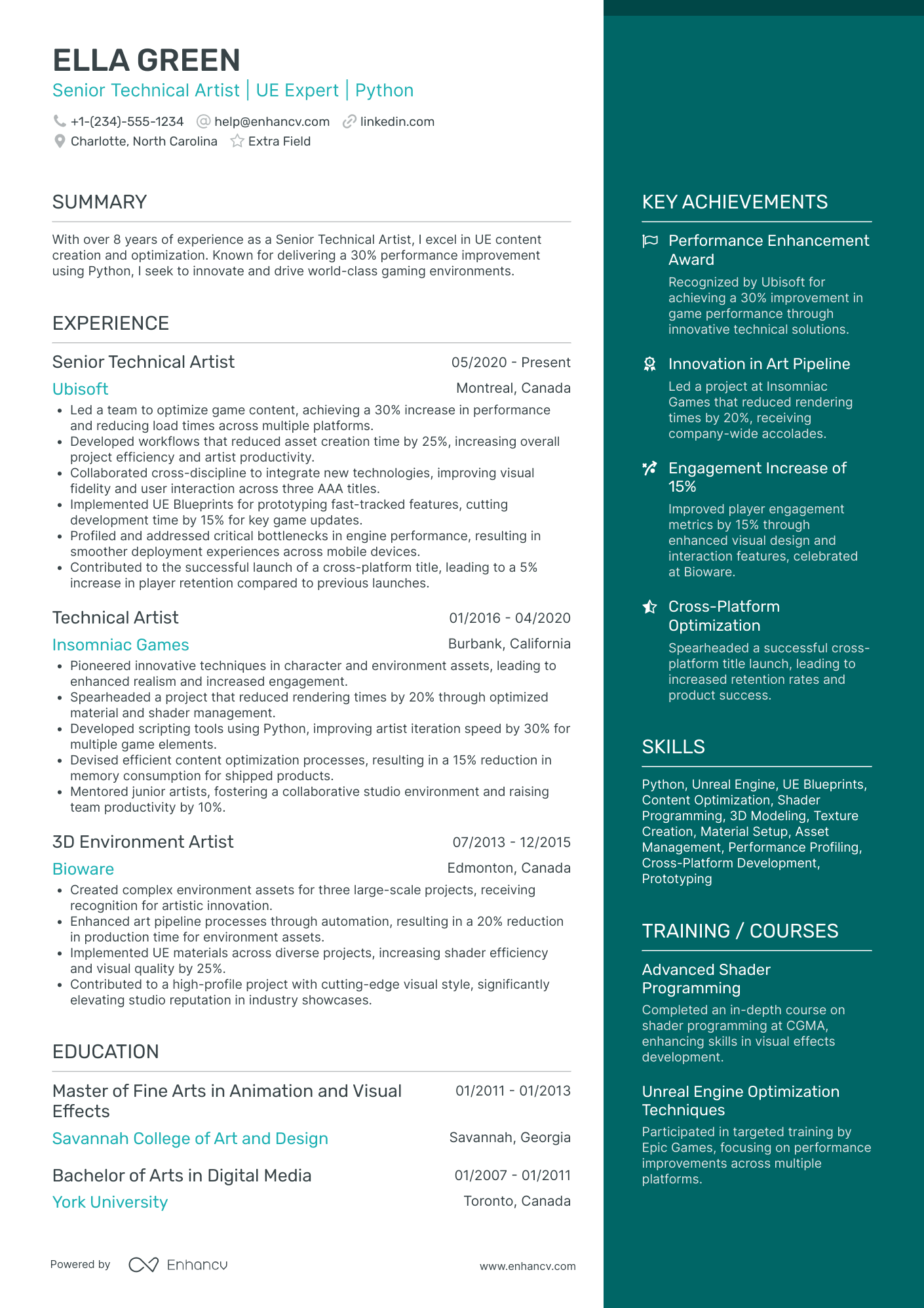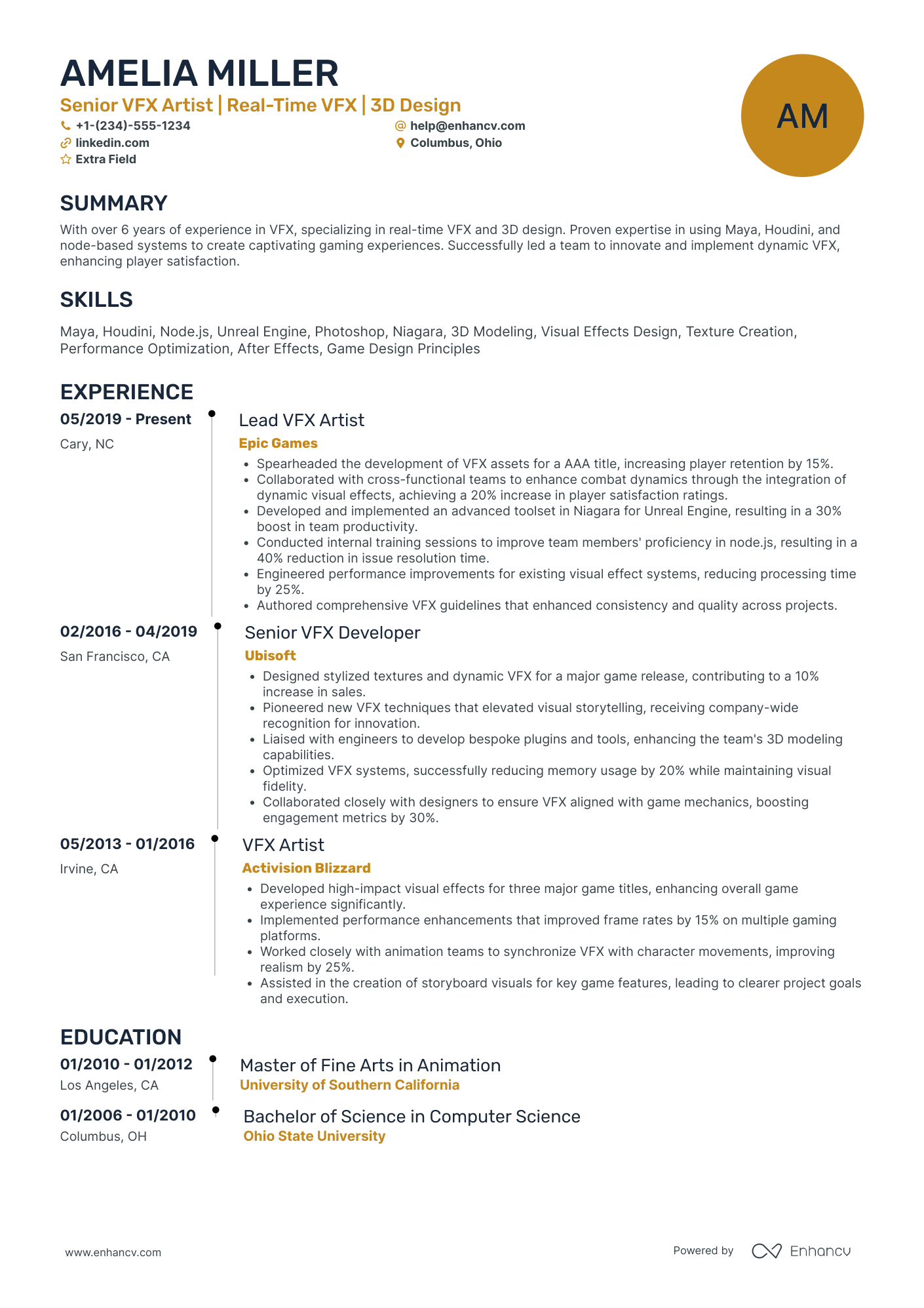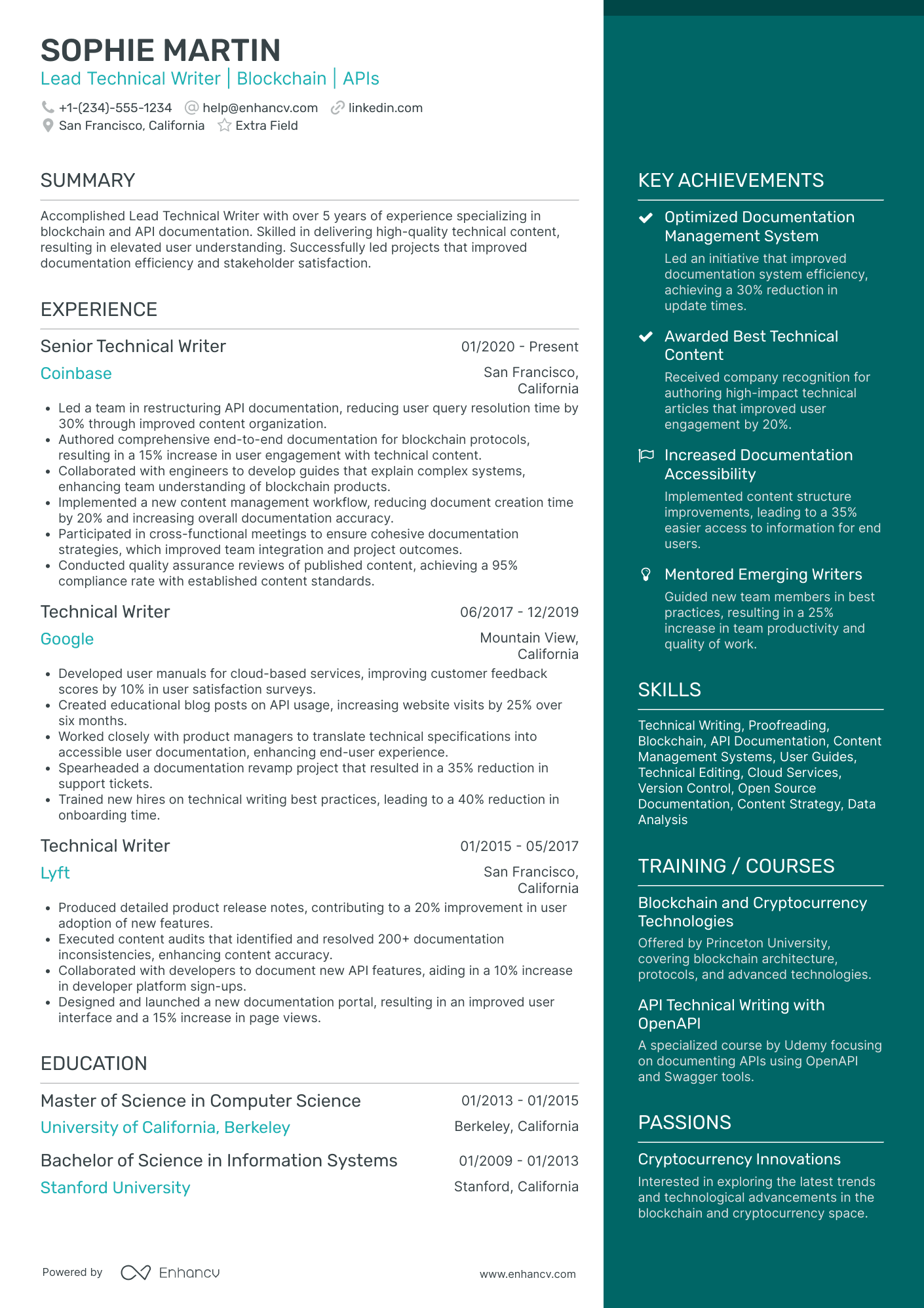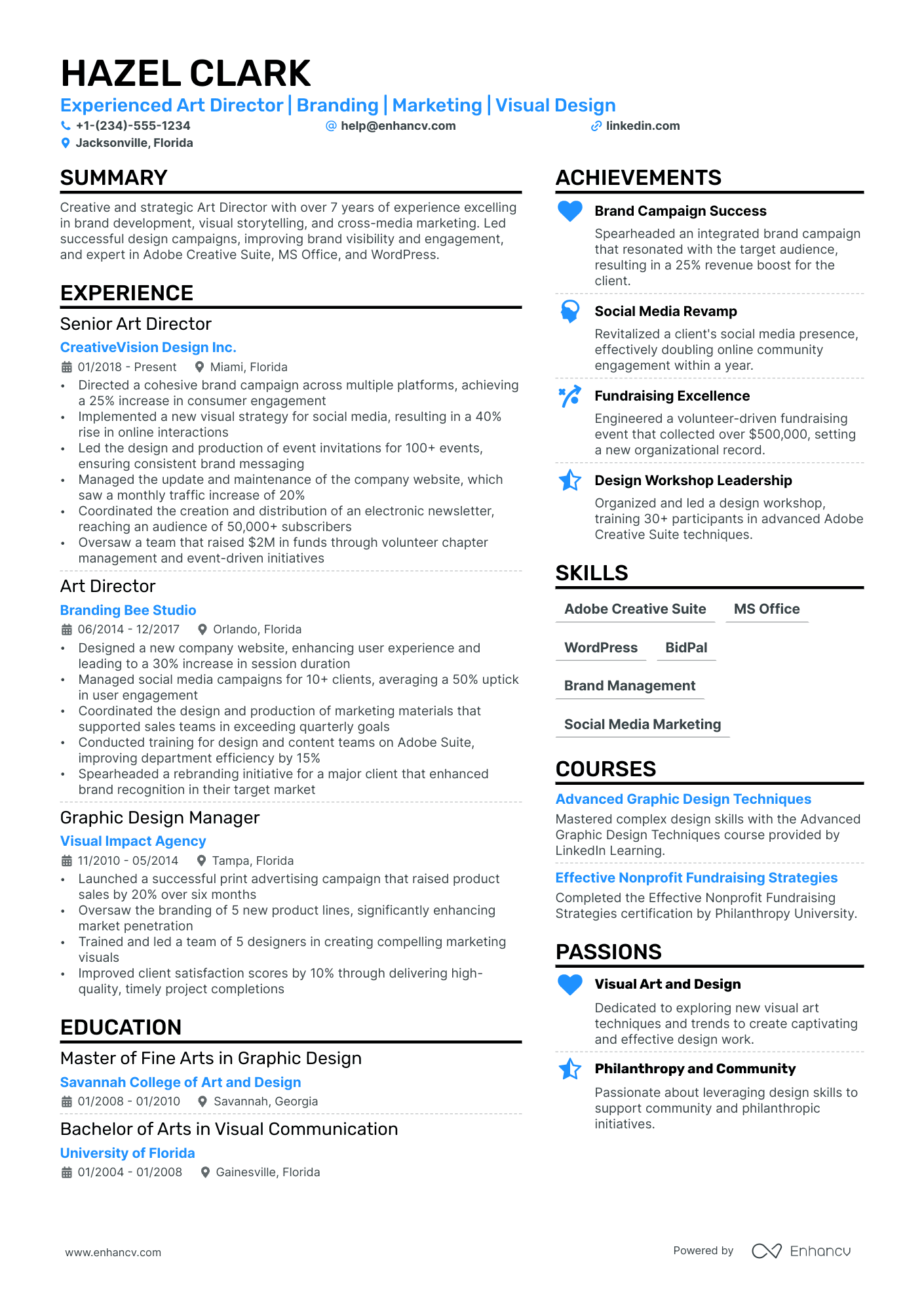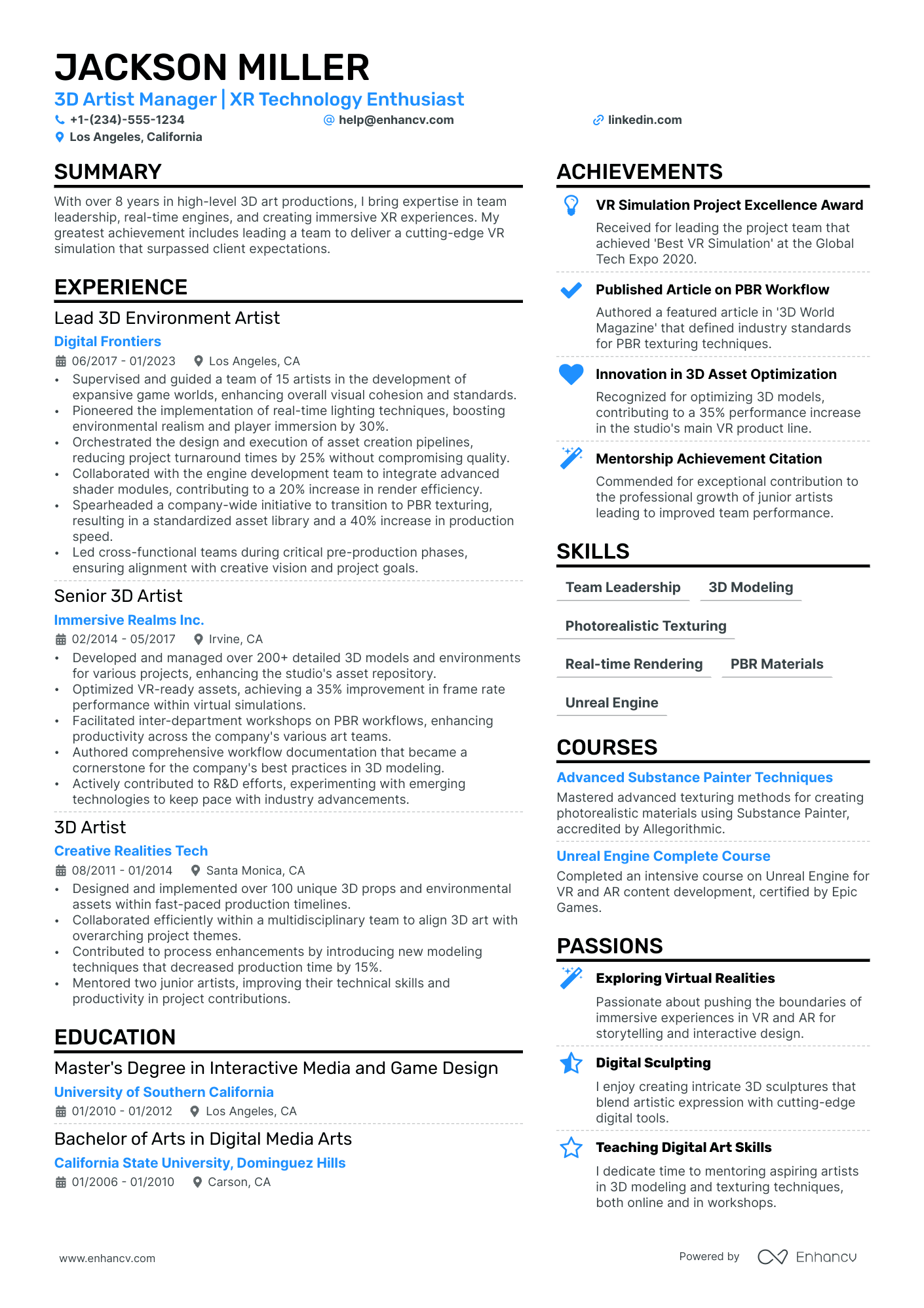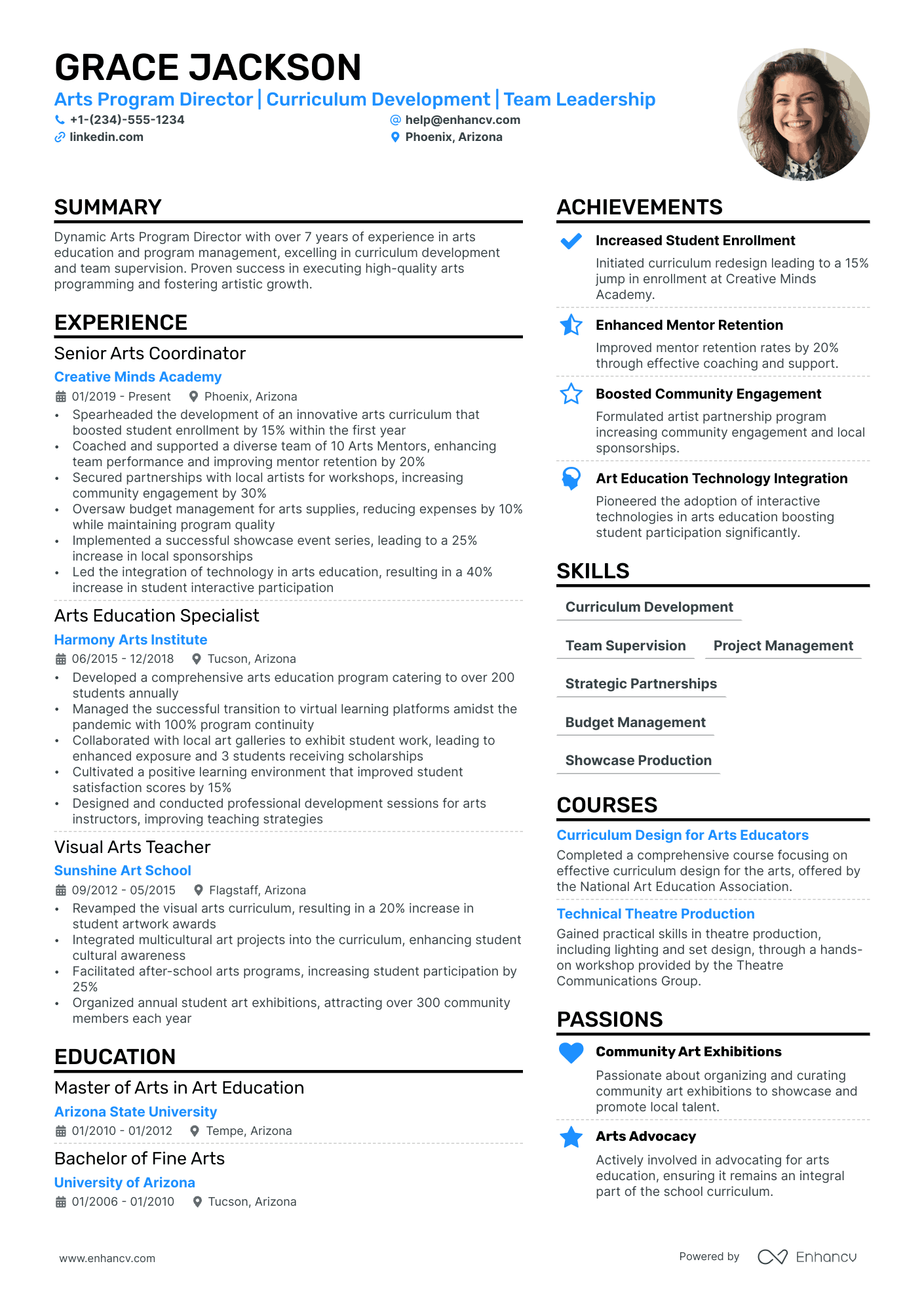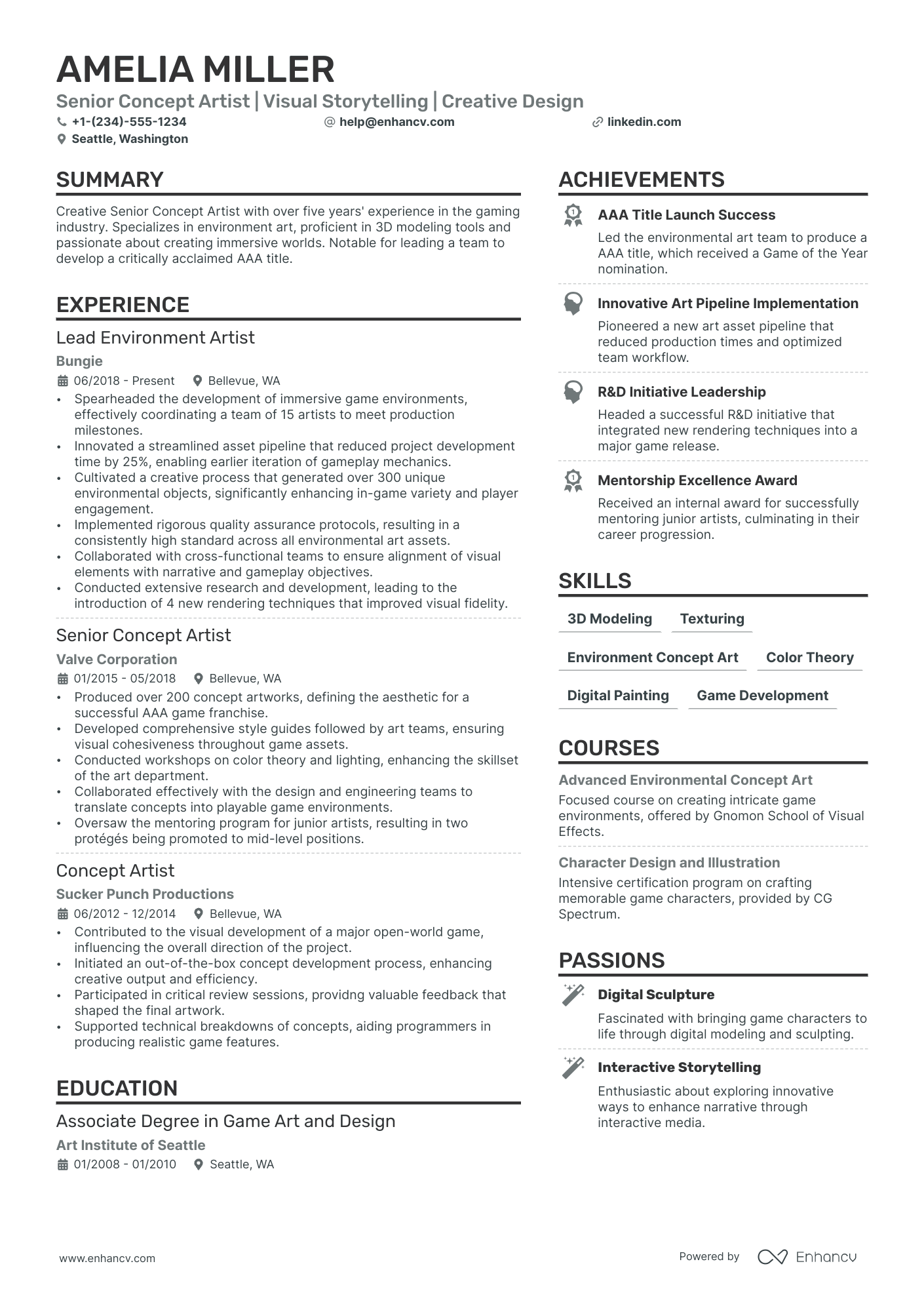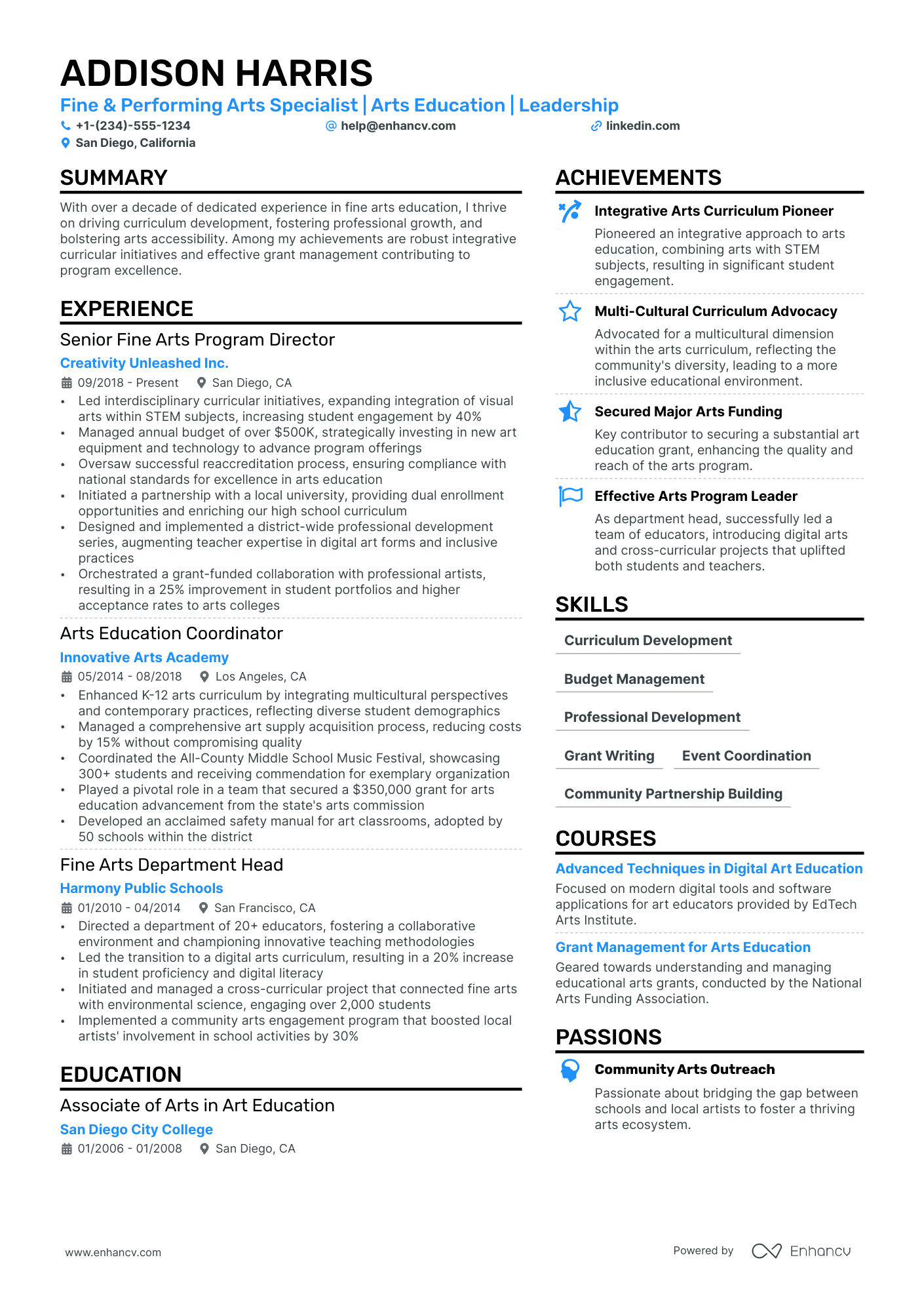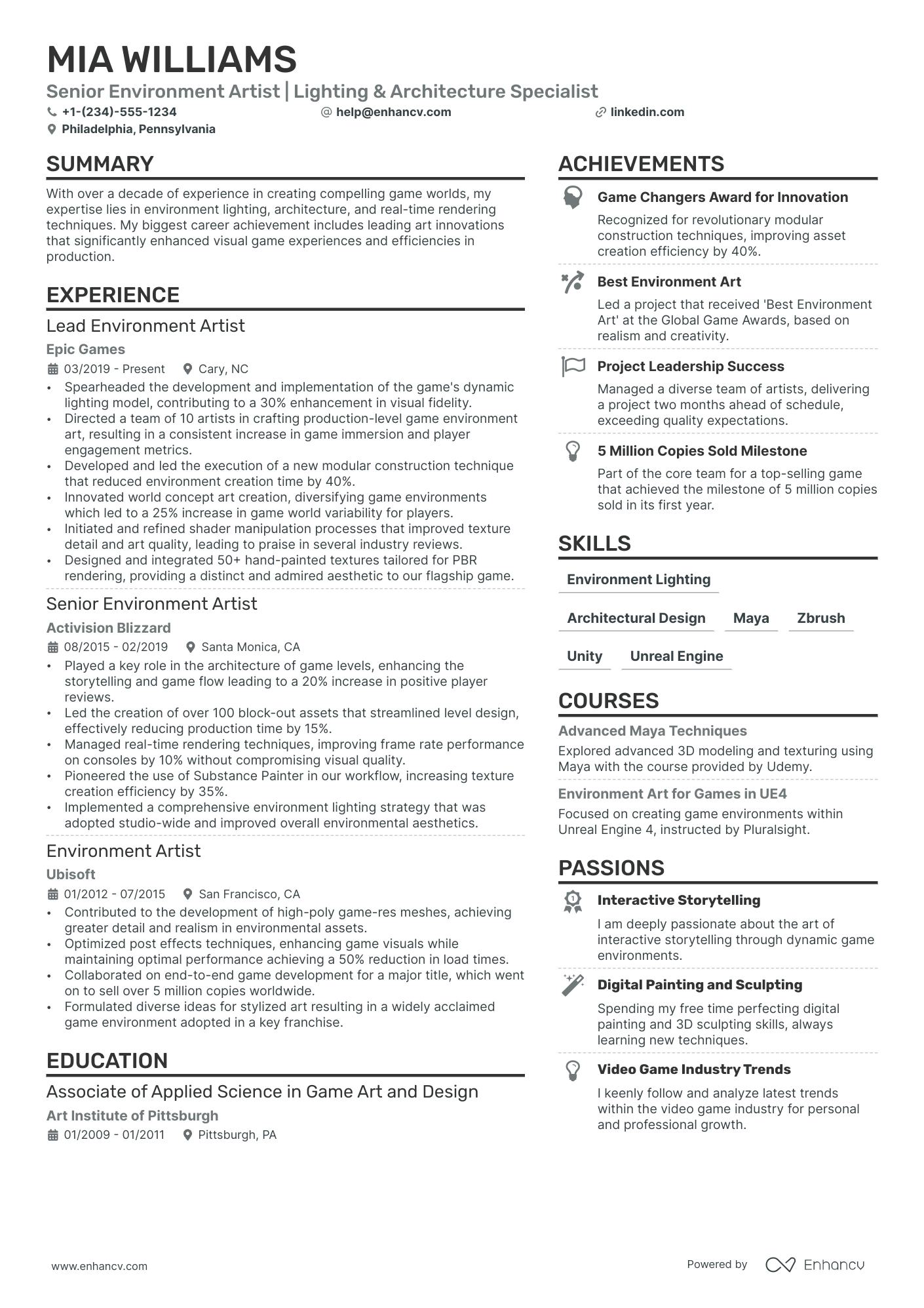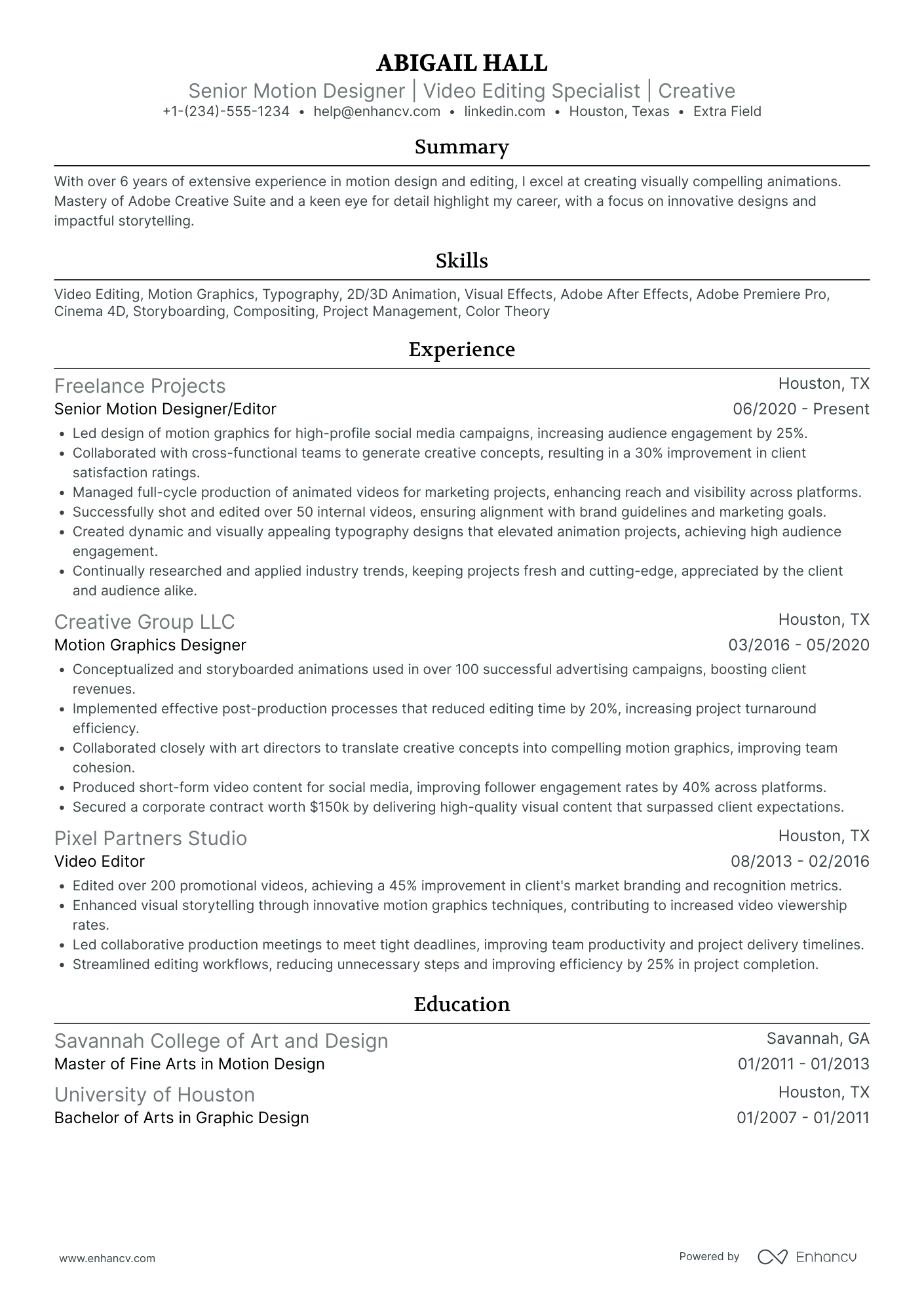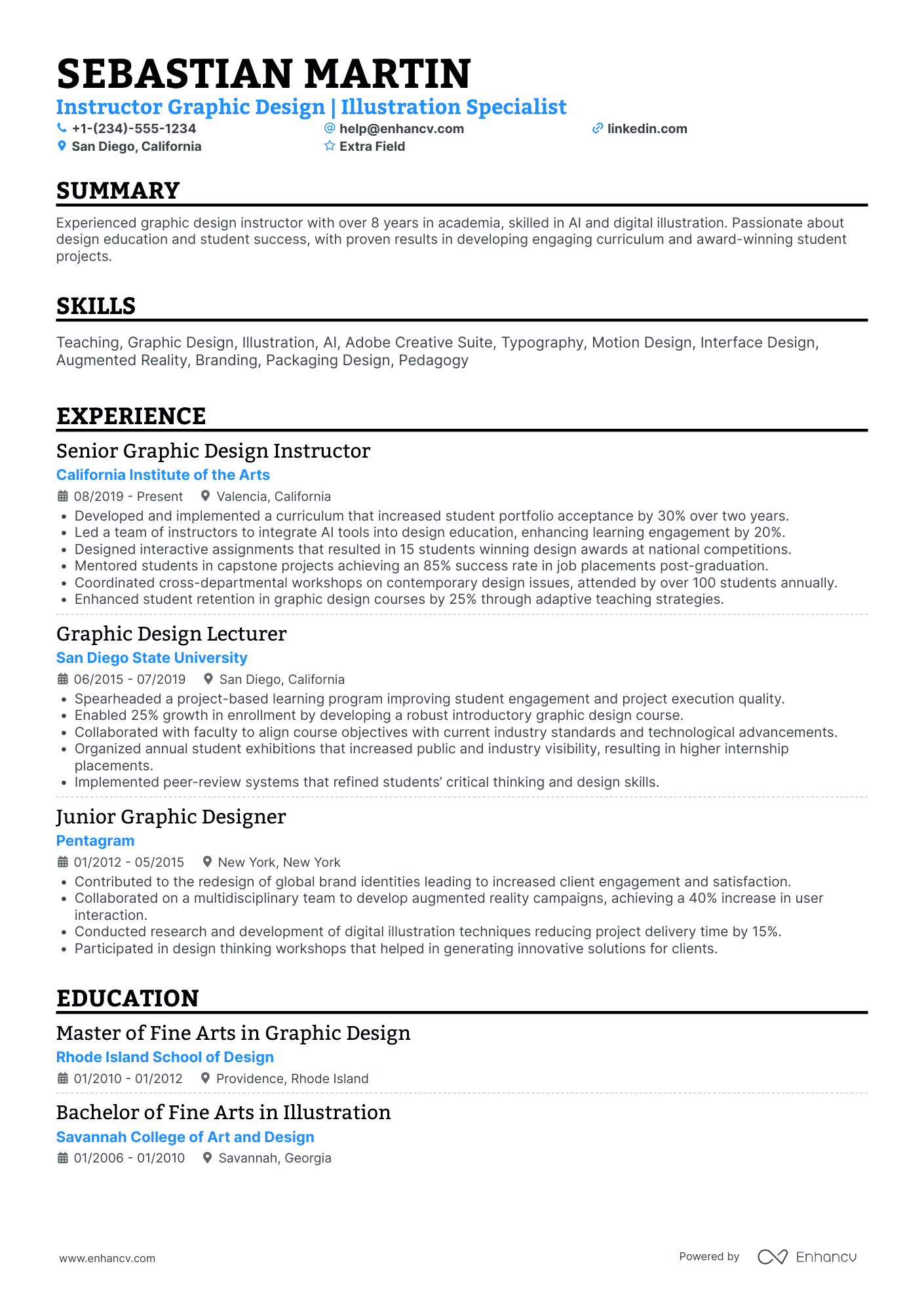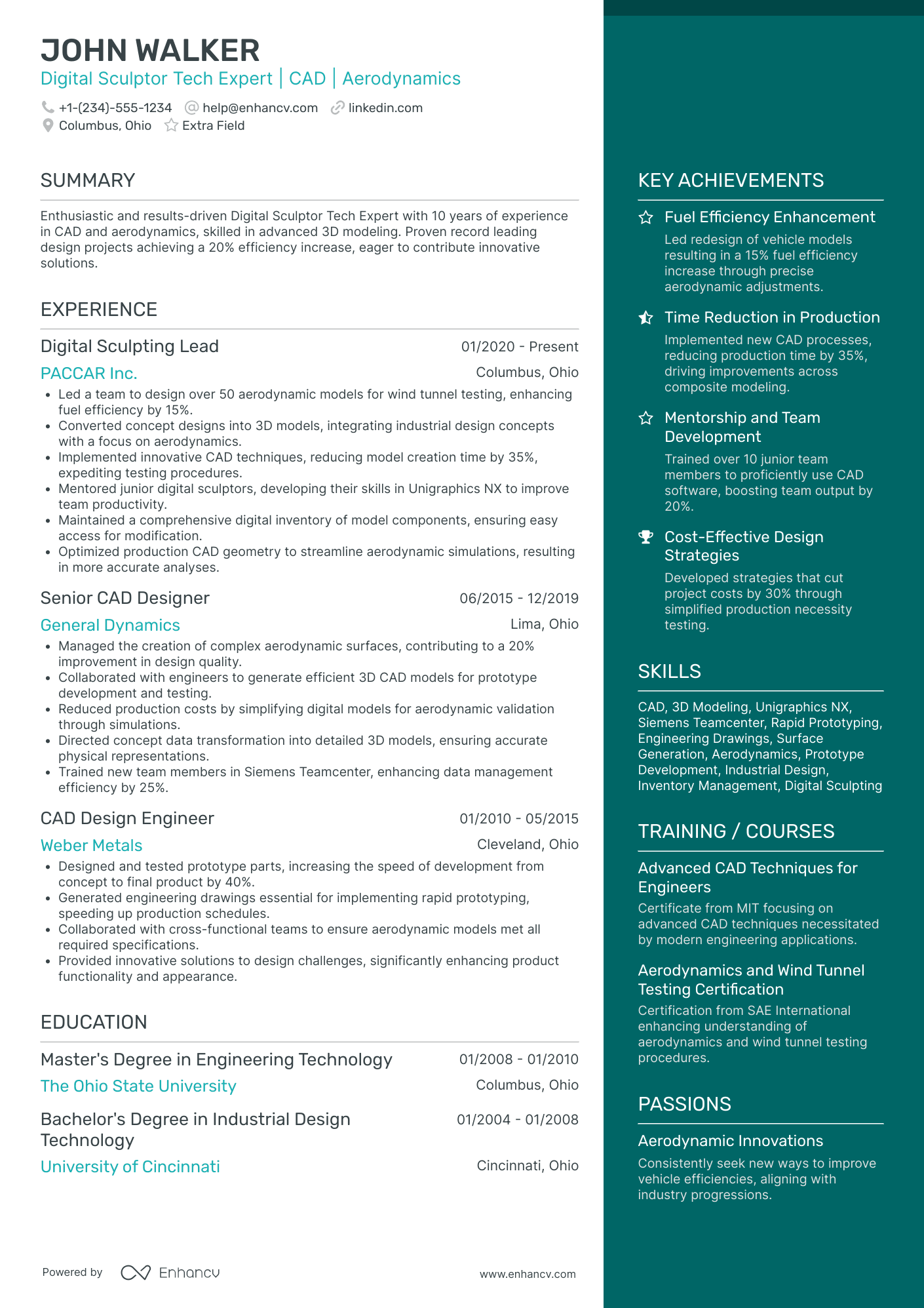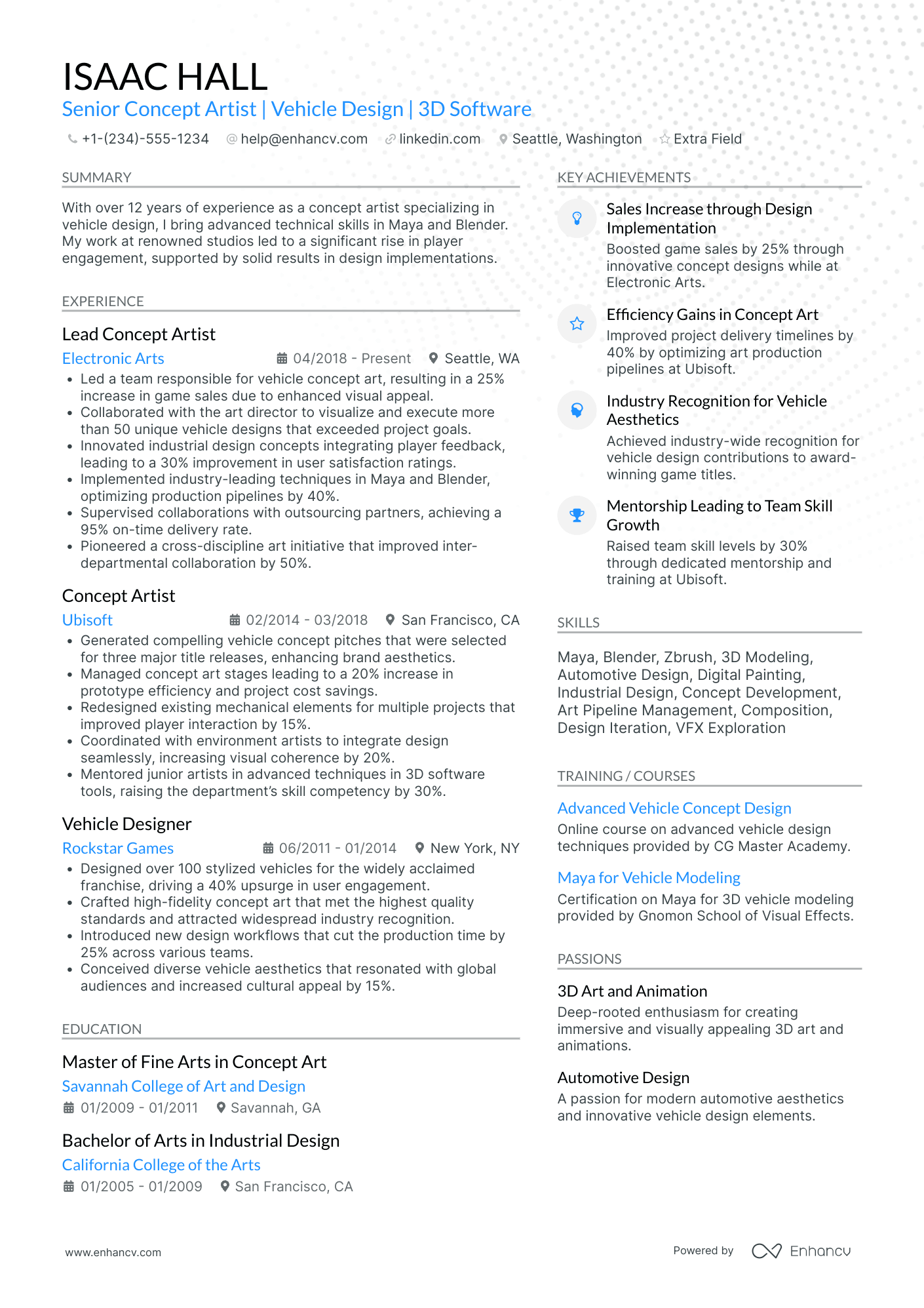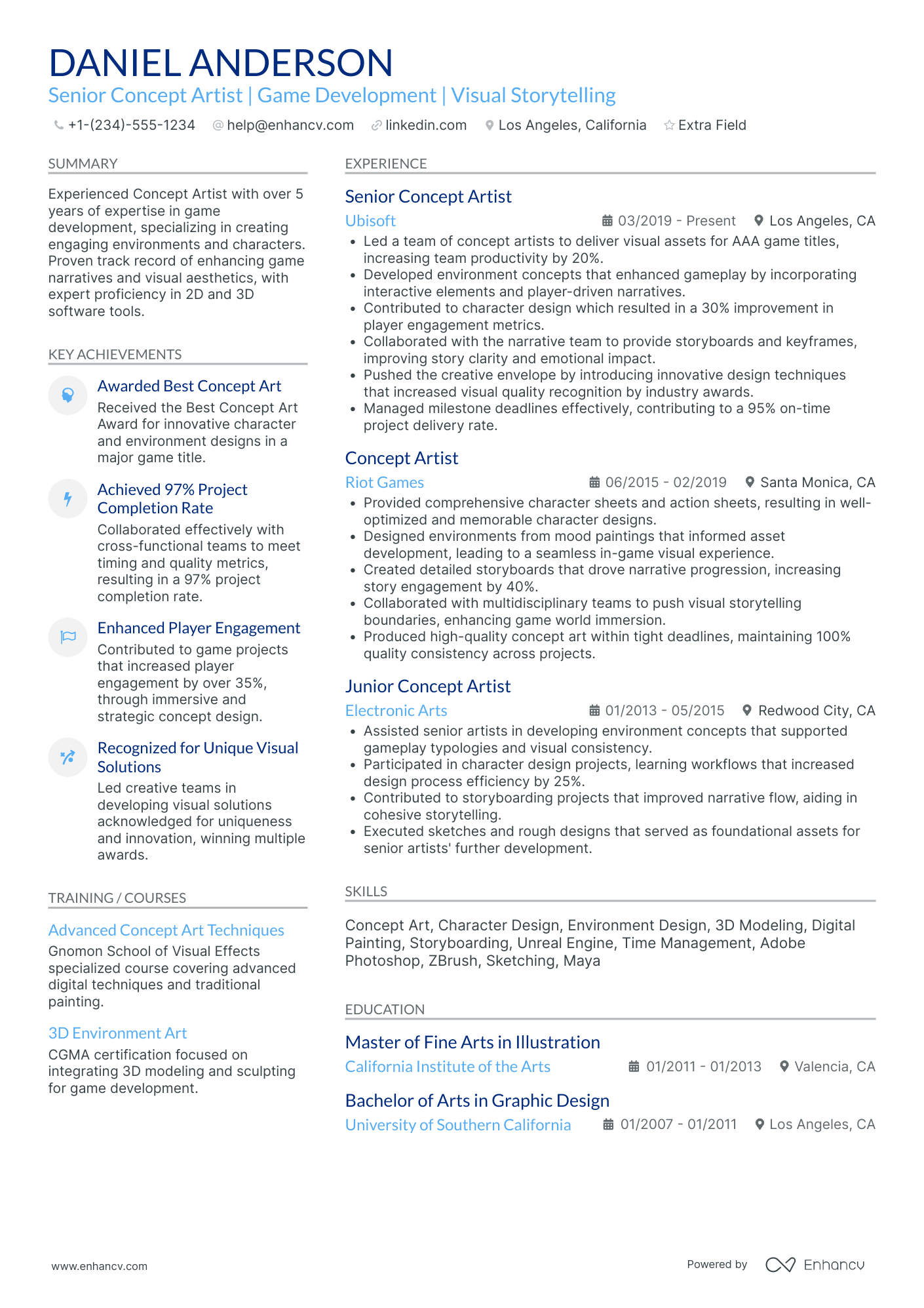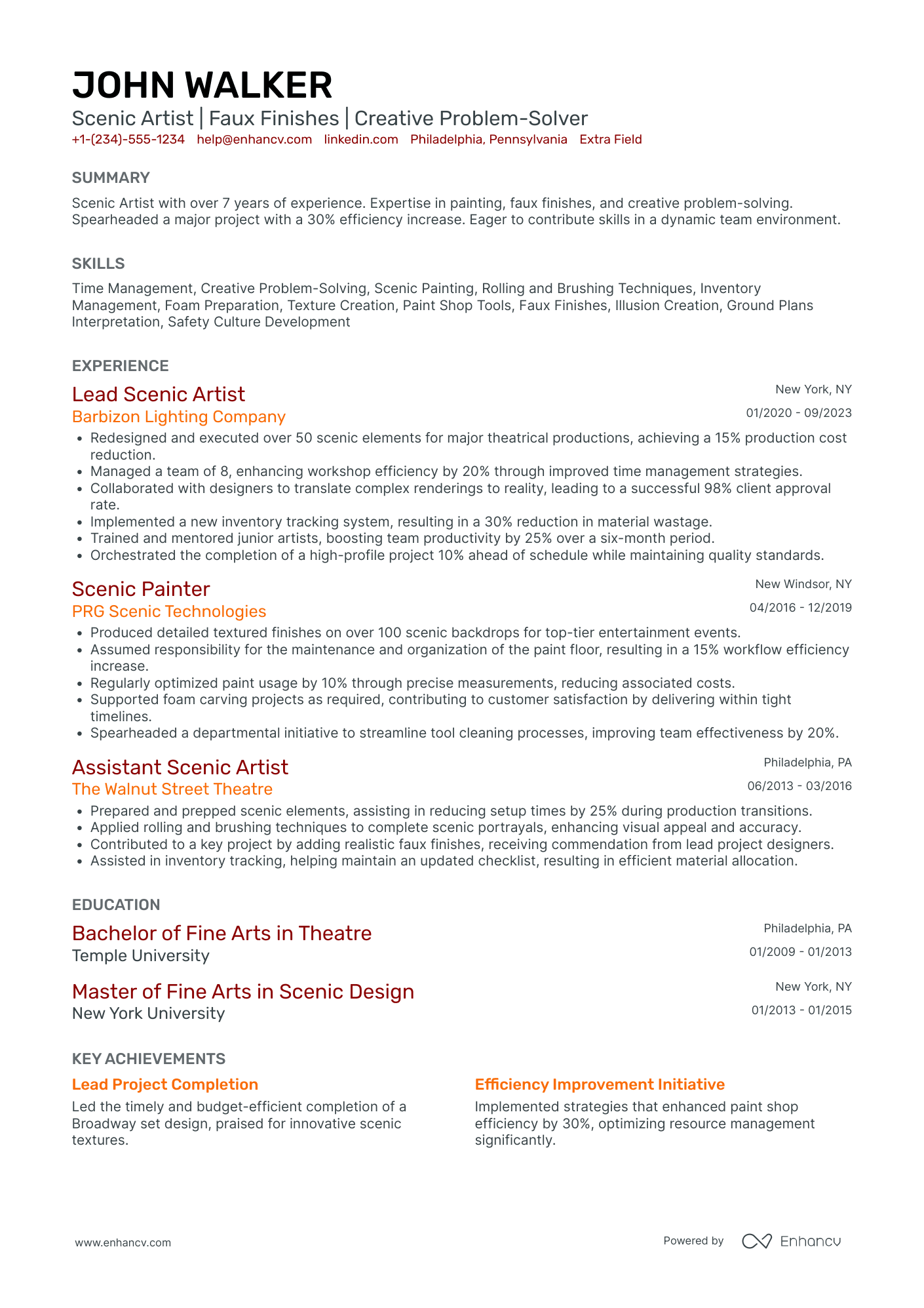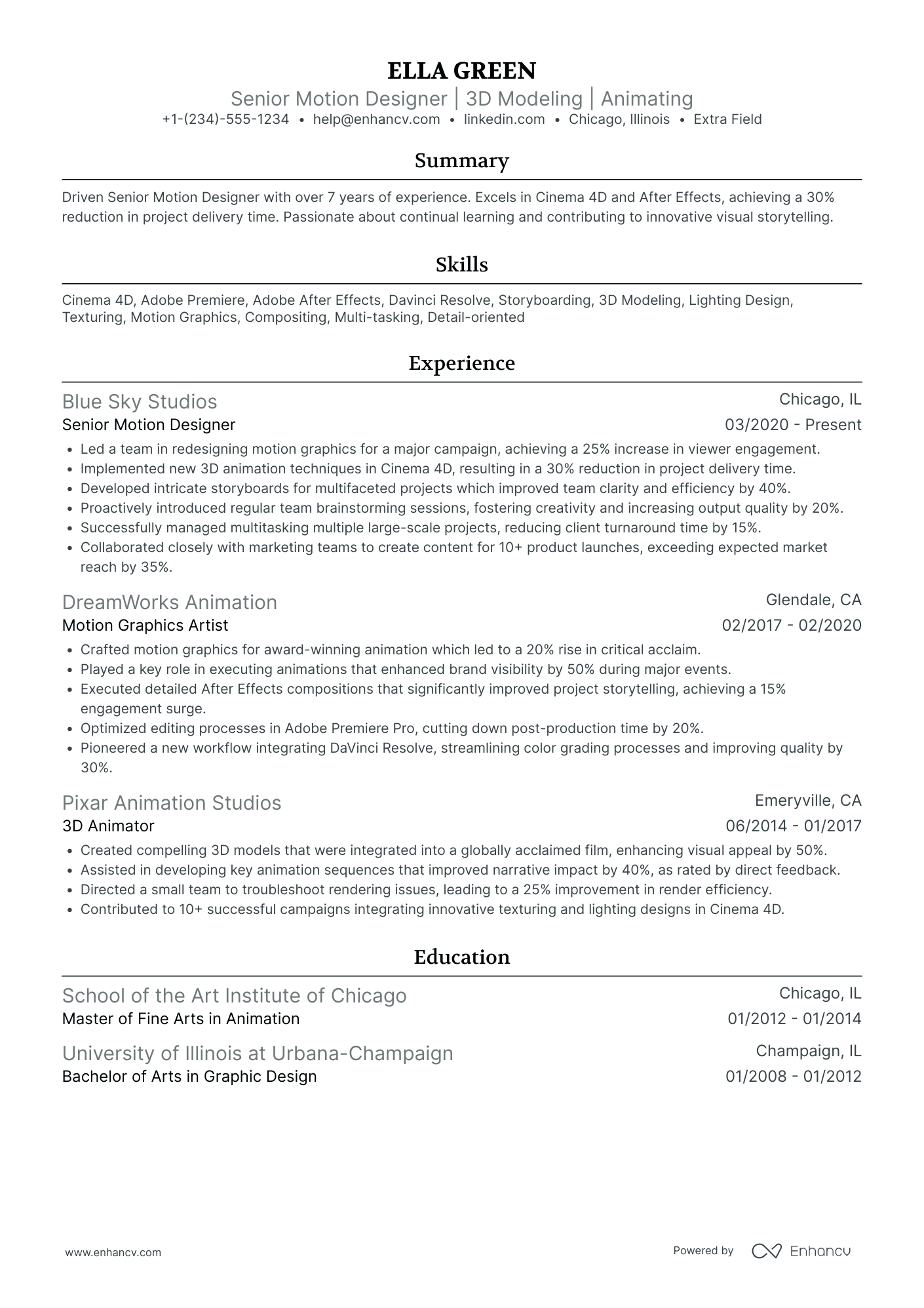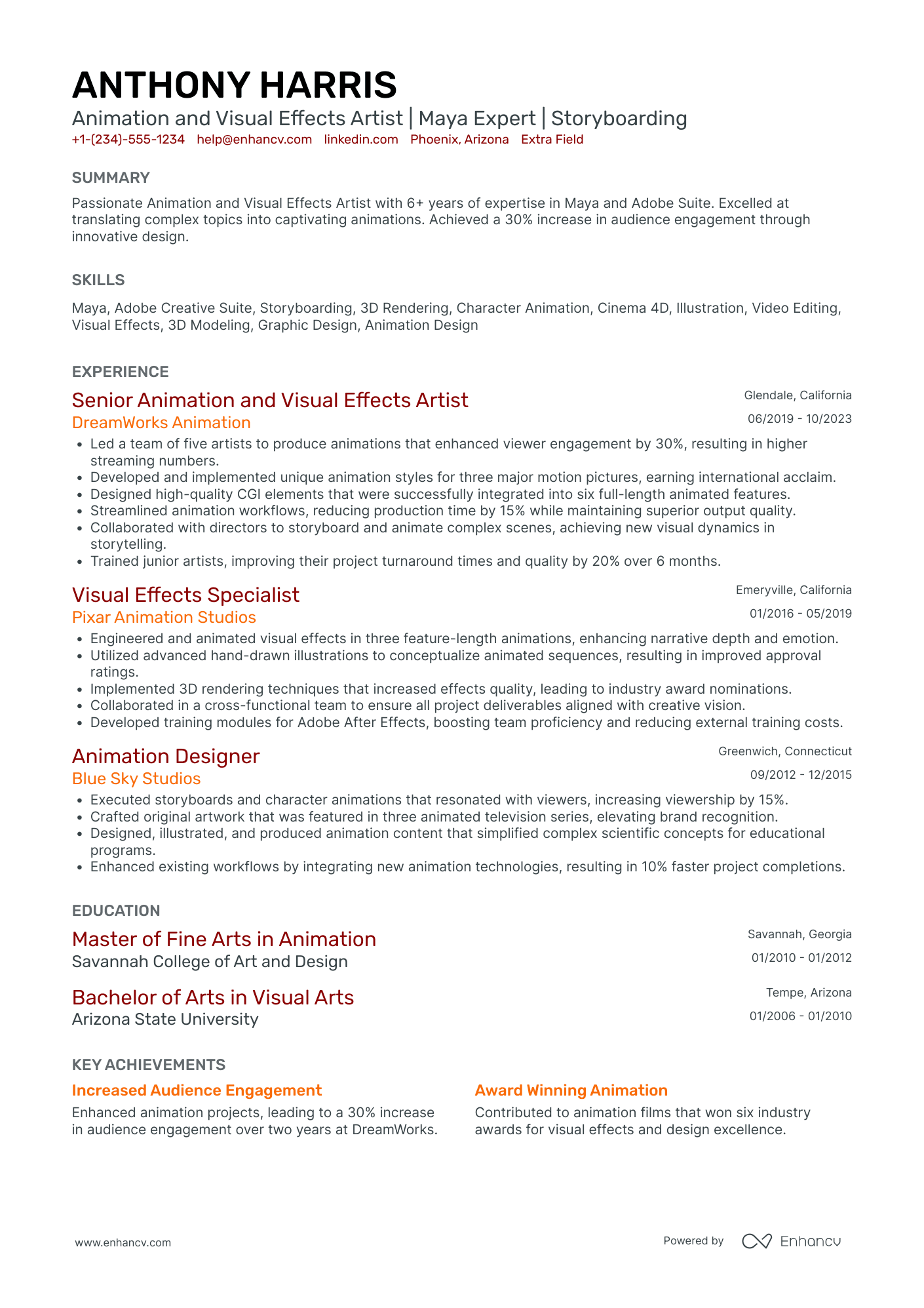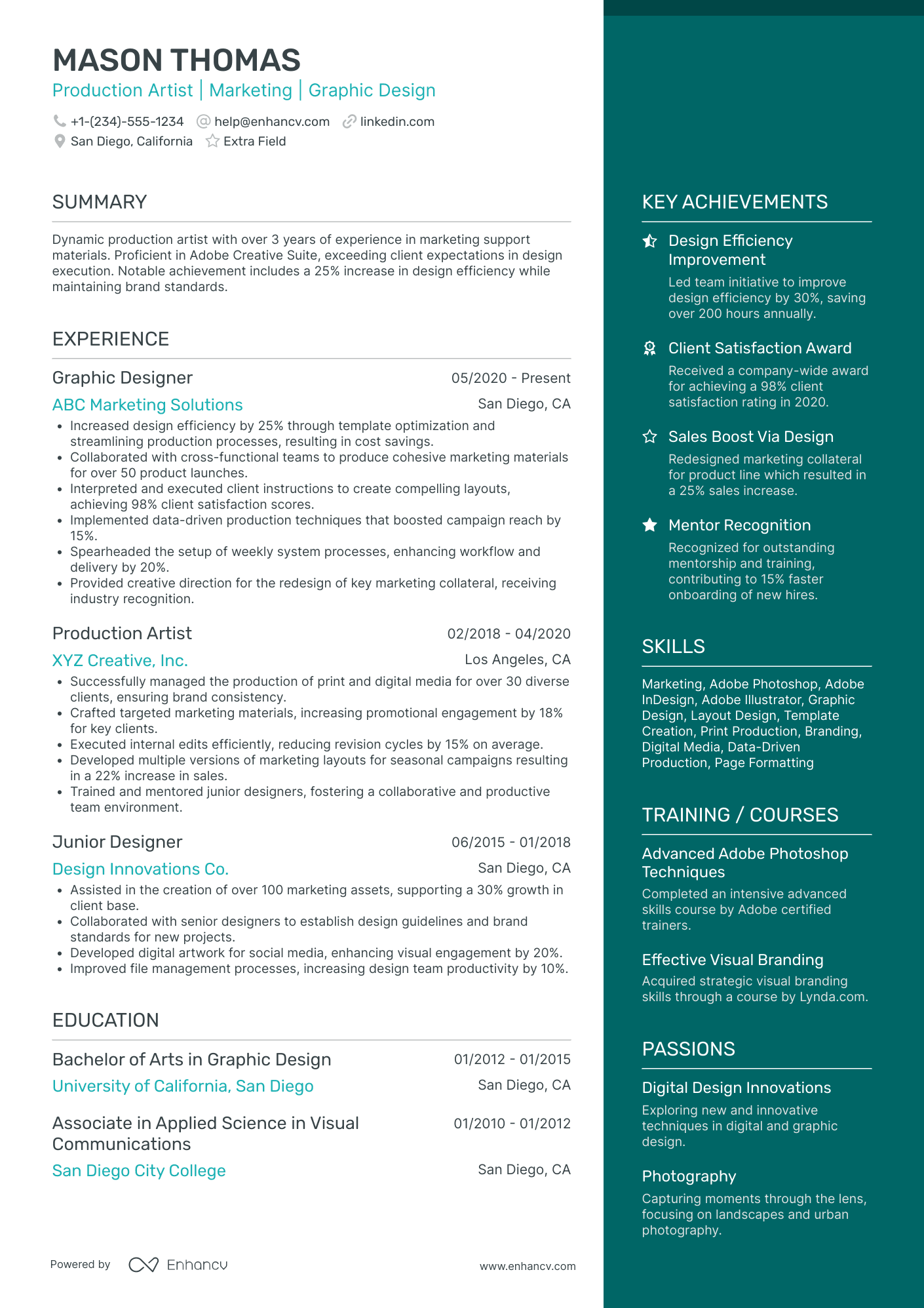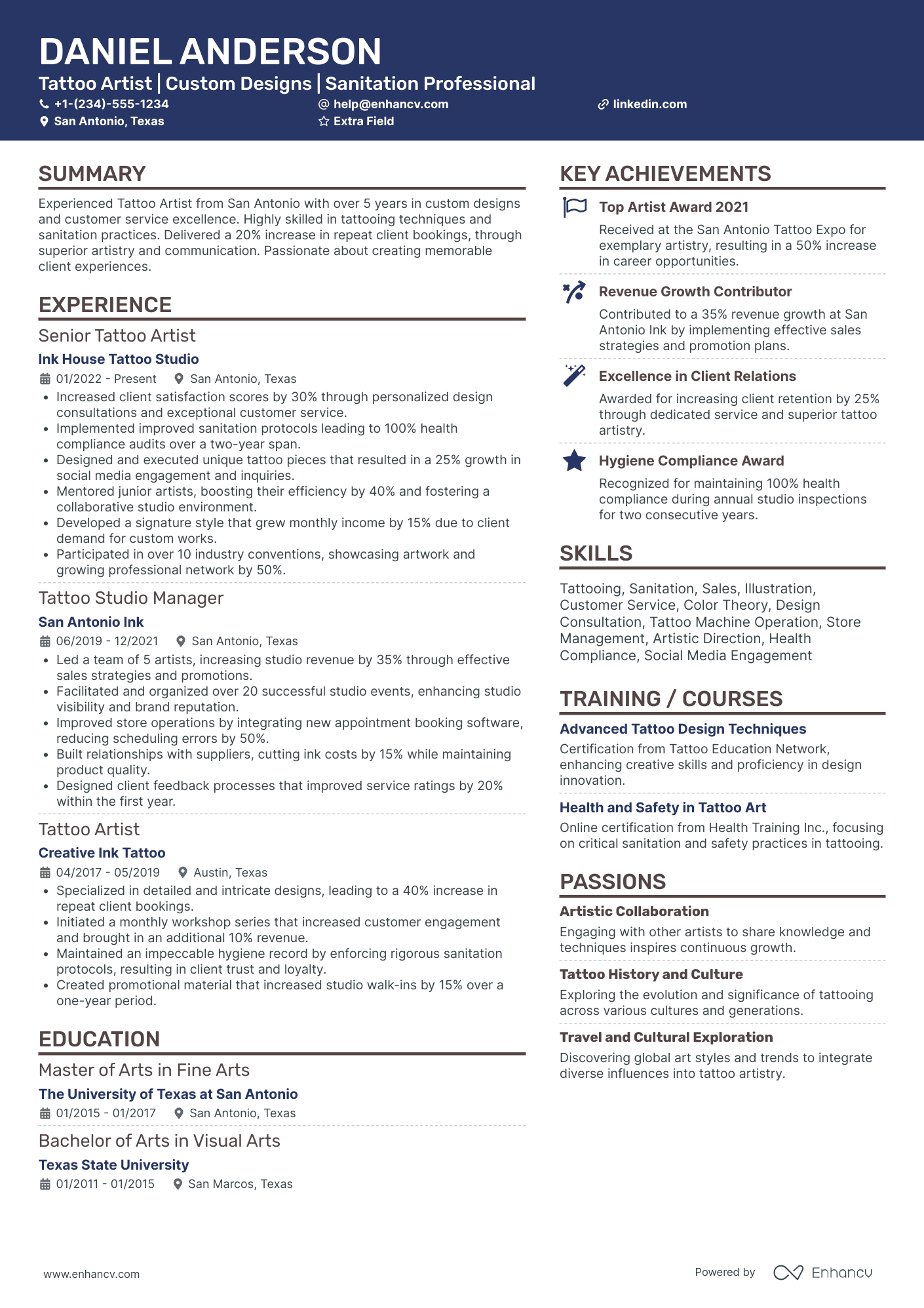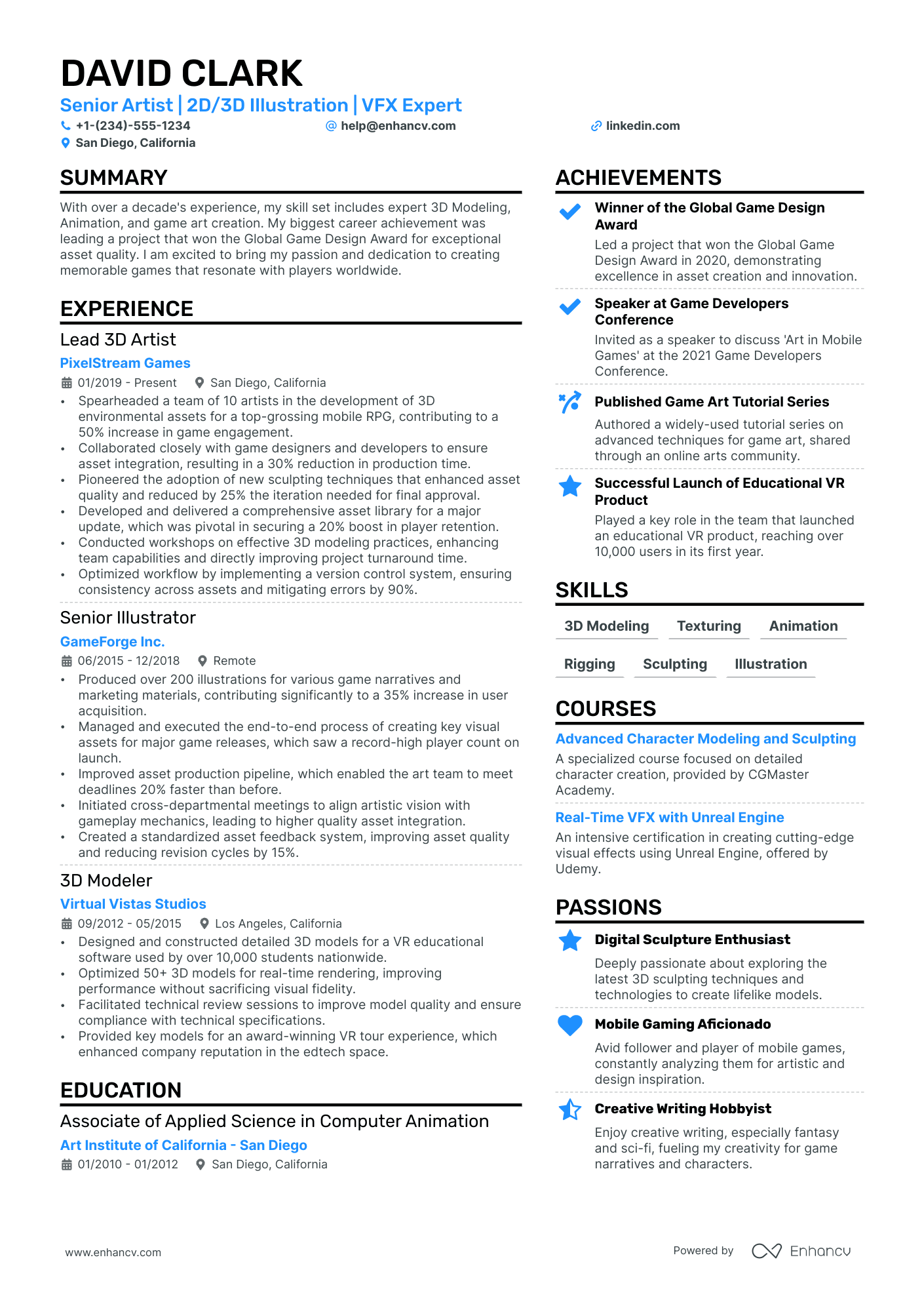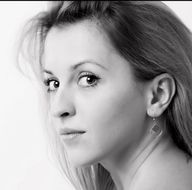Artists span various disciplines, so there’s no one-size-fits-all approach to building an artist's resume. Much like professionals in other fields, you’d need a resume for a number of occasions such as applying for residencies or grants, juried exhibitions, or teaching workshops. But how do you fit an expansive career and diverse experiences on 1 or 2 pages? Enter resume customization.
This guide will empower you to present yourself in the best possible light, aligning your unique artistic identity with professional standards. With the help of many examples, we'll show you how to identify the information you need to include in your art resume and how to adjust it for various opportunities. Here’s what else we’ll touch on:
- Learn how to create a resume that's easy for everyone to understand, whether they're gallery owners, hiring managers, or members of a grant committee.
- Boost your credibility by focusing on your key accomplishments like exhibitions, residencies, and pieces in collections.
- Detail both your artistic techniques and your digital tool proficiency in a comprehensive skills section.
- Discover how to use numbers to showcase your achievements and make your experience stand out to hiring managers.
- Start strong by learning how to write a resume summary or objective that grabs attention right off the bat.
- Find out which less common resume sections could add extra value to your career path, making your resume stand out even more.
Before diving in, explore more specific guidelines in our other creative resume examples.
- Artist Manager Resume
- Painter Resume
- Fine artist Resume
- Designer Resume
- Creative Director Resume
- Art Director Resume
- Graphic artist Resume
- Professional artist Cover Letter
How to format an artist resume balancing clarity and creativity
While some artists might be tempted to make their resumes highly creative to reflect their artistic style, it’s essential to balance this with clarity and professionalism. To start with, choose a resume format that will best comprise your career highlights.
We recommend you use the targeted resume approach where you customize your document to showcase the experiences and skills most relevant to the position you’re applying for. Edit your resume for each application to reflect the specific needs or focus of the gallery, grant, or job.
Of course, it’s a good idea to have a ready-made resume to work from. In this case, select any of the following options:
- Reverse chronological layout: This is a common and highly recommended format, where you list your most recent experiences first and go backwards from there. It’s easy to follow and highlights your current and most relevant accomplishments.
- Functional layout: If you have diverse artistic skills or have participated in a wide range of projects, a functional layout may work best. This format focuses on your skills and experiences rather than when they occurred. It allows you to group your achievements by type—like exhibitions, commissions, and residencies—rather than by date.
- Combination (hybrid) layout: This format merges the chronological and functional layouts. You can showcase your skills and techniques at the beginning and follow this with a chronological list of professional experiences and exhibitions. This format works well if you have major career highlights that should stand out, regardless of when they happened.
PRO TIP
You can create an out-of-the-box resume to feature on your personal website or print for occasions when you want to make an immediate impact with your artistic skills. Explore some inspiring examples in our article, 23 Creative Resume Examples for 2026.
However, if you're seeking employment, make sure to first prepare a traditional resume that meets standard professional criteria.
More tips on formatting a creative resume
Since you are an artist, adding subtle visual elements can make your resume stand out. However, make sure that the design does not overpower the content. Here’s how to avoid that:
- Font: Recommended fonts include Arial, Rubik, Lato, and Times New Roman, to name a few. Make sure the font size is set between 10 and 12 points for the body and slightly larger for headings.
- Margins: To enhance readability, keep margins between 0.5 inches and 1 inch on all sides. This ensures your resume has a neat, organized appearance that is easy on the eyes.
- Resume length: If you're early in your career, aim for a one-page resume. It's easier for human recruiters and ATS scanners to process. If your artistic career is extensive, a two-page format is acceptable, but ensure all information is directly relevant to the position you are applying for.
- Header: Your resume’s header should include your name, phone number, email address, and most importantly, your portfolio link. Since art is inherently visual, a portfolio lets potential employers or collaborators see your work directly. Don’t overlook this element.
- ATS optimization: To ensure your resume passes through applicant tracking systems, include keywords from the job description that match your skills and expertise. This gives the ATS more relevant content to recognize. Additionally, to make your resume more ATS-friendly, avoid including graphics as they can confuse the software.
- File formatting: Always save your resume as a PDF to maintain the integrity of your layout and formatting. However, make sure to check the job listing in case a specific format, like a Word document, is required. Also, be sure to name your file professionally—for example, "FirstName_LastName_artist_Resume.pdf".
Is your resume good enough?
Drop your resume here or choose a file. PDF & DOCX only. Max 2MB file size.
There’s a lot to consider, but by prioritizing clarity and simplicity, you can effectively communicate your career achievements. Below, we’ve outlined the essential sections you should focus on in your resume.
The top sections on an artist resume
- Contact information: Include your name, email, and portfolio link.
- Artistic experience: List relevant roles like exhibitions and residencies.
- Education and training: Show formal education and any artistic workshops.
- Skills and techniques: Detail artistic methods and digital tool proficiency.
- Awards and recognitions: Highlight accolades that elevate your credibility.
Hiring managers will be looking for specific information, so be sure to present it in an accessible way.
What recruiters want to see on your resume
- Portfolio link: Sets you apart from other candidates by highlighting your unique artistic voice and technical abilities.
- Exhibition history: Indicates experience and acceptance in the art community.
- Practical skills: Shows proficiency with specific mediums and tools.
- Awards and residencies: Reflects recognition and professional development.
- Artistic education: Highlights formal training and relevant art knowledge.
Moving on to the most space-consuming part of your resume, the career history section.
How to write your artist resume experience
Whether you’re applying for a teaching position, a technical role in a studio, or a design position in a corporation, your resume should show relevant experience and help you establish your credibility and professionalism. These are the basic rules to follow when crafting your experience section.
- Focus on your most relevant experience: Highlight roles and projects that align with the target position, especially those that involve similar skills or artistic mediums. Make sure you mention the exact same keywords in your resume.
- Use action words: Start bullet points with dynamic verbs like "created," "developed," "curated," or "exhibited" to make your experiences sound more impactful and proactive.
- Detail your artistic contributions: Describe your specific contributions to projects, shows, or collaborations. For instance, explain the themes you explored, the techniques you specialized in, or the audience your work reached.
- Mention collaborations and roles: If you've worked in collaborative environments, mention this to showcase your ability to work as part of a team. Also, specify the nature of your roles, whether you were leading a project or contributing as a key artist.
- Quantify your achievements: Whenever possible, use numbers to quantify your impact. We’ll explore this in more detail later.
Now, let’s compare two examples, a good and a bad one, and see what’s done well and what’s not.
- •Completed a mural project on a key municipal building, turning it into a well-known cultural landmark, subsequently highlighted in local media.
- •Designed a sculpture installation in a public space, increasing foot traffic and commercial activity in the area.
- •Spearheaded community art programs.
These entries lack specific details and metrics that quantify achievements which makes them far from compelling and concrete. For example, phrases like "increasing foot traffic and commercial activity" would be more effective with specific percentages or numbers.
Additionally, using more dynamic and varied verbs could enhance the impact of each statement.
Let’s see how this can be improved.
- •Completed a large-scale mural for a prominent city building that became a cultural landmark, leading to a feature segment on City Arts TV
- •Conceptualized and executed a sculptural installation in a public park, which increased local foot traffic and commerce by 30% in the surrounding area.
- •Organized community-based art initiatives, including co-founding an annual art fair that hosts over 50 artists and attracts more than 5,000 visitors each year.
Why does it work?
- Specific achievements: The descriptions provide specific outcomes, such as the mural becoming a cultural landmark and being featured on 'City Arts TV'. This detail shows the impact and recognition of the artist’s work.
- Quantifiable results: The mention of a 30% increase in foot traffic and commerce offers a clear, measurable outcome of the sculptural installation, making the achievement more tangible and impressive to potential employers.
- Detailed involvement: Community-based initiatives outline the artist's leadership and organizational skills, as well as the scale of their contributions.
- Good use of action verbs: Each bullet starts with a dynamic word contributing to the overall image of the artist as someone proactive and result-oriented.
In the following section, you’ll see how you can amplify your experience by using numbers.
How to quantify impact on your next resume
The use of data in your resume can vary depending on your specific specialty or industry. Select metrics that best reflect your relevance within your chosen sector.
Here’s just a small list of examples of how to quantify impact on your resume.
- Include the total sales value of artworks sold through galleries or independently to demonstrate commercial success and market demand.
- Mention the percentage increase in social media followers or website traffic post-exhibition to showcase marketing skills and audience engagement.
- Specify the budget managed for public art projects to highlight financial stewardship and the ability to work with significant sums.
- List the number of art pieces commissioned by corporate clients to reflect professional trust and your ability to meet business needs.
- State the number of gallery representations to indicate credibility and acceptance in the art world.
- Quantify the decrease in material costs achieved through innovative techniques to show efficiency and cost-management skills.
- Detail the number of countries where your work has been exhibited to illustrate international appeal and cultural versatility.
- Provide the attendance figures for solo shows or exhibitions to display drawing power and public interest in your work.
How do I write my resume with no direct experience
My advice is to look for some other jobs before you try to become an artist. At first, you should expose yourself to many experiences. Because you must have a profound experience in life to be an artist. There aren’t many people who can express what they learn about the world. So before you try to become an artist I want you to go out to the world and learn about it.
Hiroshi Sugimoto
The Japanese artist’s advice underscores a profound truth. Yet, no matter what path you pursue initially, you’ll still need a resume.
When artists lack direct professional experience, there are several strategies they can use to enhance their resumes and showcase their potential. These approaches are useful for new graduates, emerging artists, or those transitioning from other fields into the art industry. Here are some practical tips to help you present a strong resume:
- Choose a functional resume: Great for beginners, this format starts with a detailed skills section at the top of your resume and briefly describes your work history at the end.
- Focus on education and training: Emphasize any formal education in art, including degrees, diplomas, certificates, or relevant coursework. Also, list any workshops or seminars you've participated in, especially those led by notable artists or institutions.
- Include related experience: If you haven’t held a traditional job in the arts, you can still include related experiences. This could be internships or roles in other fields that involve creative skills, such as graphic design, marketing, or event planning.
- Include your portfolio: Your portfolio is a key part of your artistic identity. Include personal projects, school assignments, or freelance work that best represents your skills. Put a link to your online portfolio in your resume header.
- List technical skills: Mention any artistic techniques you are skilled in, as well as your proficiency with tools and software like Adobe Creative Suite, sculpting tools, or digital photography equipment.
- Participate in community and network events: Get involved in community art projects, exhibitions, or online forums. Networking can lead to mentorships, collaborations, and job opportunities. Include any exhibitions where your work was featured, even if they were small or local.
- Artistic projects and collaborations: If you’ve worked on any artistic projects, either individually or as part of a team, describe these projects, your role, and any outcomes or public interactions.
- Proofread your resume: Your first resume has to be perfect. If you don’t trust your proofreading skills or simply want to save time, run your resume through our free AI-powered resume checker which can do the heavy lifting. It will help you optimize everything from the format to the spelling and grammar.
Now, let’s move on to the best ways to build an effective skills section.
How to list your hard and soft skills on your resume
In today’s market, artists often need a diverse set of skills beyond their artistic talents, such as marketing, business management, and digital skills.
The art world is constantly evolving with new technologies and methods. Artists with a strong technical foundation are better equipped to adapt to new tools and mediums, keeping their work relevant and fresh. Those with well-honed technical abilities are more likely to succeed in ventures like commissions, exhibitions, and collaborations.
Below is a list of the most in-demand practical skills in the creative field.
The best hard skills for an artist resume
- Adobe Photoshop
- Adobe Illustrator
- Adobe InDesign
- CorelDRAW
- 3D modeling software (Blender, Autodesk Maya)
- Oil painting
- Watercolor painting
- Acrylic painting
- Sculpture
- Woodworking
- Metalworking
- Printmaking
- Photography
- Digital illustration
- Engraving
- Pottery and ceramics
- Glassblowing
- Textile arts (weaving, embroidery)
- Video editing software (Final Cut Pro, Adobe Premiere)
- Motion graphics software (Adobe After Effects)
It's beneficial to list your hard skills in a dedicated section of your resume. This layout helps ATS scanners process your information quickly and allows recruiters to easily identify your qualifications.
While interpersonal skills, which are gained through relationships and experiences, are equally crucial, they should not be isolated in a separate section. Instead, demonstrate them with examples throughout your resume.
The best soft skills for artists
- Visual storytelling
- Artistic vision
- Critical thinking
- Problem-solving
- Adaptability
- Collaboration
- Communication
- Attention to detail
- Time management
- Project management
- Open-mindedness
- Perseverance
- Patience
- Self-motivation
- Cultural awareness
- Presentation skills
- Networking
- Client relations
After showcasing your hard and soft skills, the next important step is to detail your educational background, highlighting any degrees, certifications, or relevant workshops that have shaped your artistic journey.
How to list education and certifications on your resume
The education and certification sections enhance the credibility of your resume. If you excelled as an arts student or attended a prestigious art school, it's beneficial to provide a detailed education section. Conversely, if you are self-taught and have not attended art school, you can omit this section and instead emphasize your freelance experience or relevant art projects.
Below is a simple method for listing your academic path:
- List your degree.
- Specify the institution from which you obtained your degree.
- Include dates of attendance or graduation date.
- Mention any notable accomplishments or any relevant coursework.
Here’s an illustration:
- •Awarded Best Undergraduate Thesis for 'Modern Myths and Visual Narrative' exploring the intersection of folklore and modern visual media.
The same approach can be applied to the certifications on your resume. Keep in mind that if you hold more than two you should list them prominently in a separate section. If it’s just one, you can easily put it in the header or the summary statement.
Below are some of the most popular certifications for American artists:
The best certifications for your artist resume
Next, we’ll discuss how to write a compelling resume summary or objective.
How to write your artist resume summary or objective
The summary is often the first section that people, such as gallery owners, potential clients, or judges, read. It can capture the reader's interest and encourage them to look more closely at your artwork.
A successful resume summary does the following:
- It succinctly expresses your unique style, preferred mediums, and artistic philosophy.
- It creates an engaging narrative that can sway decisions in your favor.
- In this digital age, where artists often market themselves online through social media and personal websites, a strong summary helps to optimize search engine visibility and attract a larger audience.
To achieve this, craft a 3-5 sentence description of your career history, emphasizing concrete achievements and areas of expertise. Ensure that the skills and accomplishments you highlight align with those mentioned in the job posting. Conclude by detailing how you plan to contribute to the success of your potential employer.
Let’s look at two examples of an artist’s resume summary.
Clearly, this example is overly vague and lacks the passion and motivation needed to stand out in a stack of resumes. If a hiring manager were to glance at this summary, it's unlikely that they would be compelled to read further.
Look at the improved version.
Here are a few reasons why this version of the summary is more effective:
- Good use of adjectives: The summary uses descriptive words like dynamic and supportive, which convey enthusiasm and a proactive approach, making the candidate appear more engaging and competent.
- Action verbs: Action verbs such as fostering, specializes, increasing, and developed are used to start each sentence. They describe the candidate’s active role and contributions and showcase their initiative and leadership in their field.
- Quantified achievements: The summary includes specific, quantified achievements, such as increasing student participation in regional art competitions by 40%. This provides concrete evidence of the teacher’s effectiveness and impact.
- Promise: The final sentence articulates a clear goal of nurturing a supportive and inclusive environment. This paints a picture of a mission-driven educator who’s committed to positive educational outcomes.
If you have less than 3 years of experience or are transitioning from another field, consider writing an objective statement instead of a summary. Similar in purpose, an objective is typically shorter—no more than 3 sentences—and focuses on aligning your professional goals with the employer's values and mission. See the example below.
Optimize your resume summary and objective for ATS
Drop your resume here or choose a file.
PDF & DOCX only. Max 2MB file size.
Additional sections for an artist’s resume
Your resume can be enriched with several additional sections beyond the standard education, experience, and skills sections. Use this opportunity to better showcase your unique qualifications and experiences. Here are some suggestions:
- Awards and recognitions: Highlight any awards, grants, or honors received to underscore recognition in the art community.
- Residencies: Include any artist-in-residence programs you have participated in, which reflect dedicated time for artistic development and community involvement. These can be put in the “Experience” section and formatted accordingly.
- Publications: Mention any catalogs, magazines, or books where your work has been featured. This section can also include scholarly articles you have written related to your field.
- Collections: Note any private or public collections that include your work, signifying your art’s appeal and value.
- Professional affiliations: List memberships in professional art organizations, which show your active participation and networking in the art community.
- Workshops and speaking engagements: Detail any workshops you have led or conferences where you have spoken. This demonstrates leadership and your role as an educator or influencer in your field.
Your artistic career isn’t complete without mentioning your exhibitions, so see how to add them to your resume.
How to list exhibitions on your resume
Exhibitions are crucial for an artist's resume as they showcase the artist's work in public settings and demonstrate both the acceptance and appreciation of your art within professional circles. They also indicate your active involvement in the art community, enhancing your credibility and visibility to galleries, collectors, and potential collaborators.
When listing solo or group exhibitions follow this simple formula:
- Year, exhibition title, location
- A one-line description of the exhibition’s topic of interest
Key takeaways
Crafting your artist's resume is about creating a reflection of your artistic essence while adhering to professional standards. Here are the essential takeaways from this guide which will help you put together a resume that truly represents you:
- Customize your resume: Adapt your resume to reflect the specific needs of each application, whether it's for a gallery, grant, or job, highlighting relevant experiences and skills.
- Select the right layout: Choose between a reverse chronological, functional, or combination layout depending on your career phase and the type of job you are targeting to best showcase your accomplishments.
- Optimize for ATS: Include relevant keywords and save your resume in a compatible format to ensure it passes through applicant tracking systems without issues.
- Balance creativity with professionalism: While it's important to reflect your artistic style, ensure your resume remains professional and easy to read.
- Highlight key sections: Focus on areas like artistic experience, skills and techniques, and education and certifications to enhance your resume's impact.
- Quantify achievements: Whenever possible, use specific metrics to detail your professional impact, lending credibility and tangibility to your accomplishments.
Artist resume examples
By Experience
By Role
